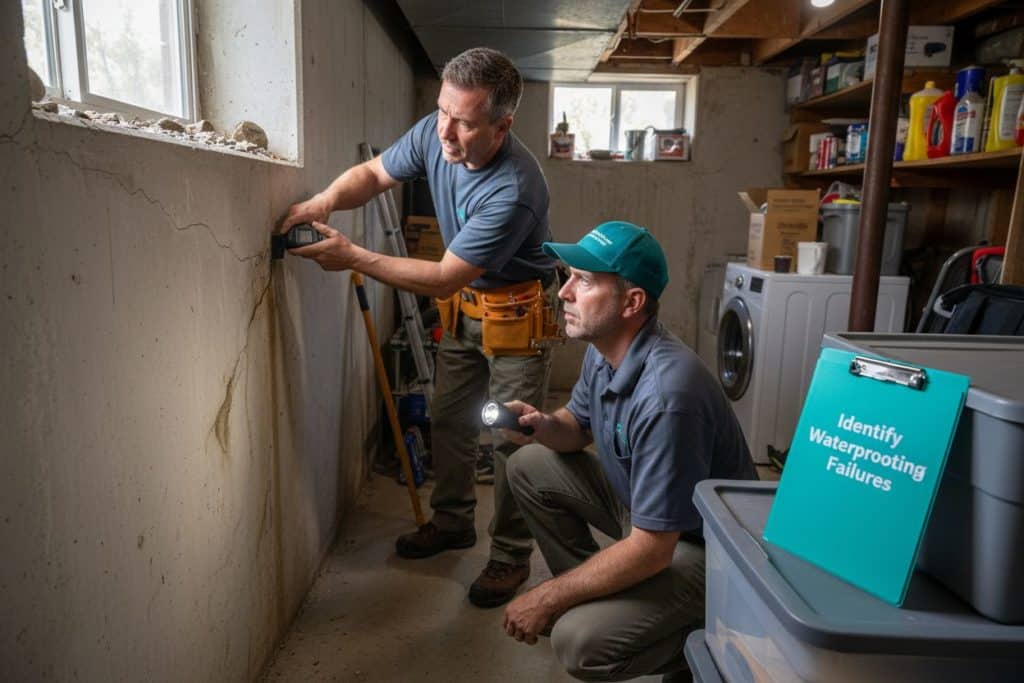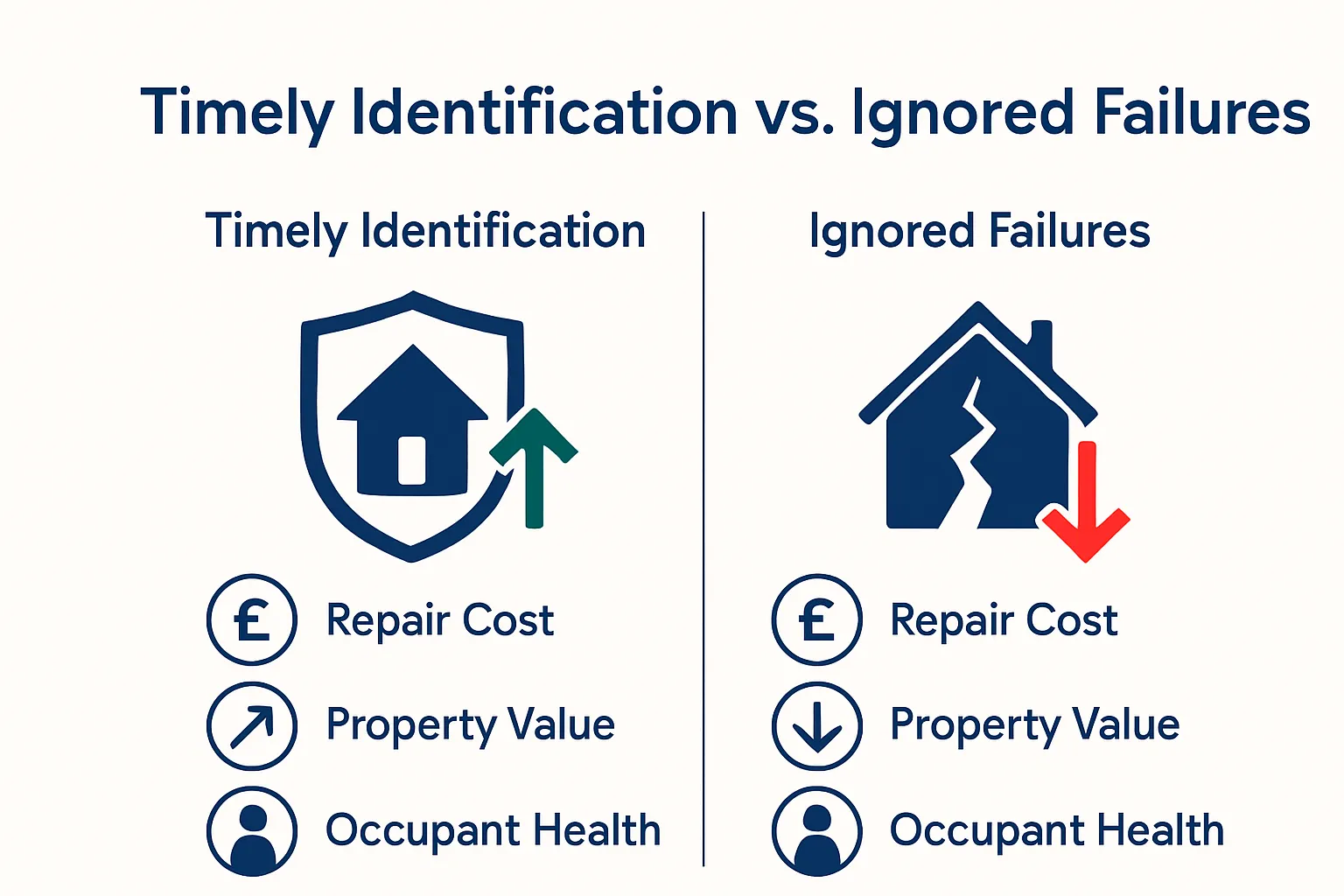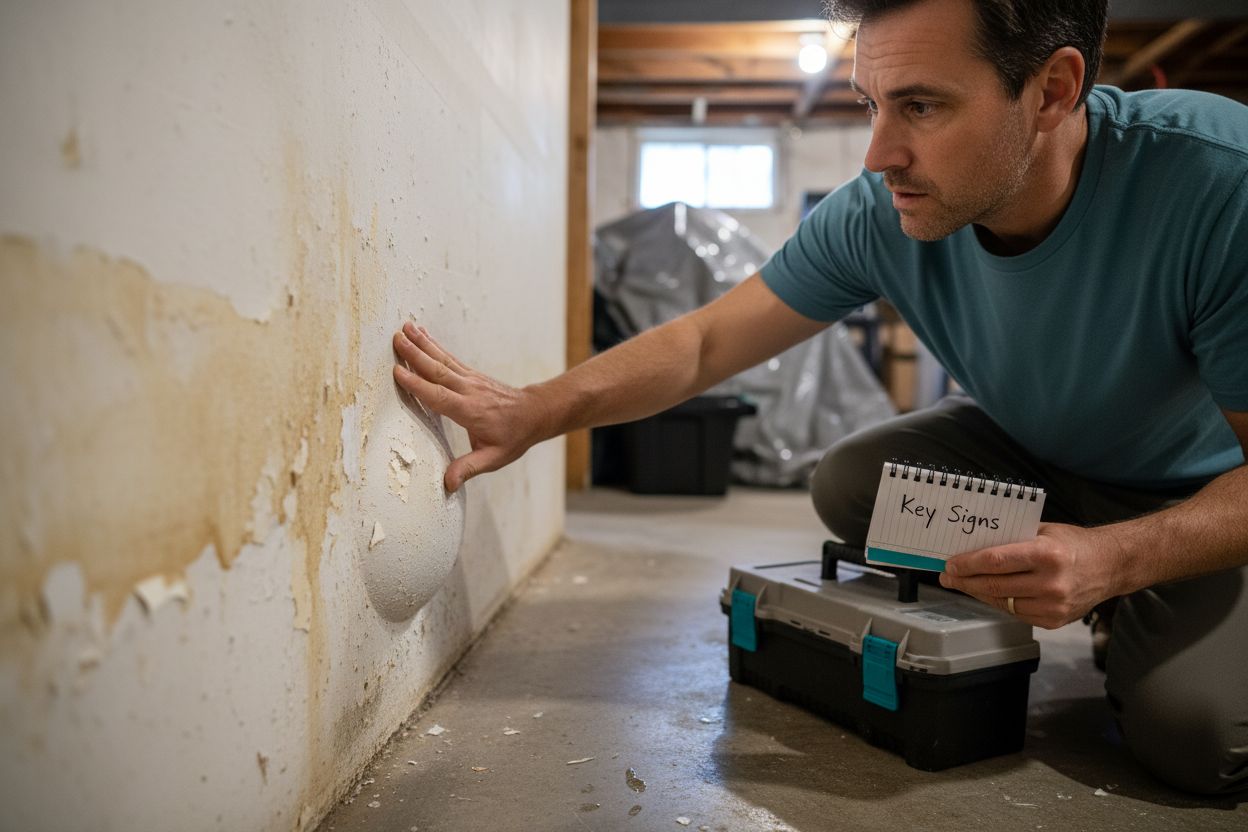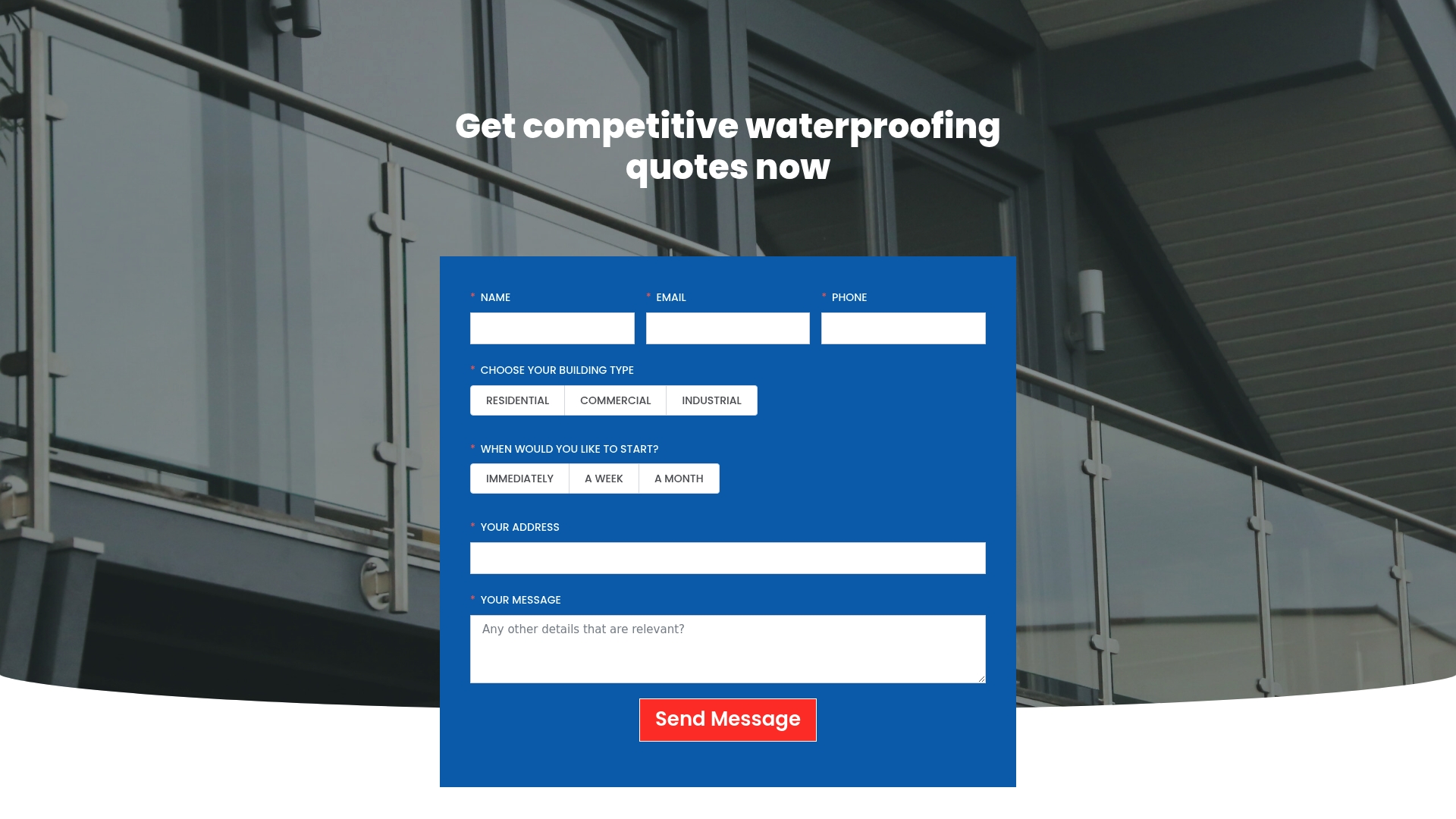Waterproofing failures are more common than most property owners expect and they can quietly undermine the safety and value of any building. Surprising as it sounds, unresolved moisture issues can slash property values by up to 25 percent and trigger health risks within weeks. Most think a bit of peeling paint or a damp smell is nothing to worry about but these are just the earliest clues of problems that can lead to massive repair bills and long term structural damage.
Table of Contents
- What Are Waterproofing Failures And Their Causes?
- Why Identifying Waterproofing Failures Is Crucial
- How Waterproofing Systems Function And Their Vulnerabilities
- Key Signs And Indicators Of Waterproofing Failures
- The Impact Of Ignoring Waterproofing Failures On Properties
Quick Summary
| Takeaway | Explanation |
|---|---|
| Identify waterproofing failures early | Early detection prevents minor issues from escalating into significant damage and costs. |
| Regularly inspect for signs of moisture | Look for visual indicators like stains and discoloration that signal potential waterproofing breaches. |
| Implement proper waterproofing practices | Ensure correct installation and use suitable materials to fortify against moisture intrusion. |
| Understand environmental influences | Be aware that factors like temperature changes and hydrostatic pressure can weaken waterproofing systems over time. |
| Invest in ongoing maintenance | Regular monitoring and maintenance protect property integrity and occupant health, saving costs in the long run. |
What are Waterproofing Failures and Their Causes?
Waterproofing failures represent critical vulnerabilities in structural protection where water penetration compromises building integrity and functionality. These failures occur when designed water-resistant barriers or systems cannot prevent moisture intrusion, leading to potentially extensive and costly damage.
Understanding the Core Mechanisms of Waterproofing Breakdown
Waterproofing systems are engineered to create impermeable barriers against moisture, but multiple factors can undermine their effectiveness. Structural research institutions confirm that waterproofing failures typically emerge from several interconnected mechanical and environmental challenges.
Key mechanisms contributing to waterproofing failures include:
- Inadequate surface preparation before applying waterproofing materials
- Substandard material selection inappropriate for specific environmental conditions
- Poor installation techniques that create microscopic vulnerabilities
- Natural degradation of protective layers over time
- Structural movements causing mechanical stress and potential membrane ruptures
Root Causes Behind Water Penetration
Beyond mechanical failures, waterproofing breaches stem from complex interactions between construction practices, material properties, and environmental stressors. Property owners should understand that waterproofing is not a singular event but a continuous protective strategy.
Environmental factors significantly influence waterproofing performance. Extreme temperature variations, ground settlement, hydrostatic pressure, and chemical interactions can progressively weaken protective membranes. Our comprehensive guide on waterproofing explores these intricate relationships between structural protection and environmental challenges.
Recognising potential failure points requires systematic assessment of:
- Material integrity and age
- Installation quality
- Substrate condition
- Historical moisture exposure patterns
- Structural movement indicators
Waterproofing failures are not mere inconveniences but serious structural threats that demand proactive identification and professional intervention.
Below is a summary table outlining the primary causes of waterproofing failures, grouped by mechanical, material, and environmental factors for clarity.
| Failure Cause Area | Example Causes | Explanation |
|---|---|---|
| Mechanical | Inadequate surface preparation, | |
| Poor installation techniques | Poor preparation or technique creates vulnerabilities | |
| Material | Substandard material selection, | |
| Natural degradation | Incompatible or ageing materials lose effectiveness | |
| Environmental | Structural movements, hydrostatic pressure, | |
| Extreme temperature variations | Environmental stress weakens protective barriers | |
| Construction Practices | Inadequate installation, substrate issues | Poor practices compromise waterproofing effectiveness |
Why Identifying Waterproofing Failures is Crucial
Identifying waterproofing failures represents a critical preventative strategy for protecting property structural integrity, financial investment, and occupant health. Early detection transforms potential catastrophic damage into manageable maintenance, preventing exponential repair costs and long term structural compromises.
Financial and Structural Implications of Undetected Failures
Unaddressed waterproofing issues can rapidly escalate from minor inconveniences to substantial financial burdens. Building research experts estimate that unresolved moisture intrusion can decrease property values by up to 25% and generate repair costs significantly higher than proactive interventions.
The financial consequences of delayed waterproofing failure identification include:
- Extensive structural damage requiring comprehensive reconstruction
- Accelerated material degradation in foundations and walls
- Potential complete structural compromise requiring total replacement
- Significant reduction in property market value
- Increased insurance premiums due to repeated water damage claims
Health and Environmental Risks
Water penetration creates environments conducive to dangerous microbial growth and structural deterioration. Learn more about property protection risks through comprehensive assessment and early intervention strategies.
Moisture infiltration triggers multiple health and environmental challenges:
- Mould and fungal proliferation causing respiratory complications
- Bacterial growth in hidden structural cavities
- Compromised indoor air quality
- Potential allergenic and toxic microorganism development
- Increased risk of chronic health conditions for occupants
Early waterproofing failure identification is not merely a maintenance task but a critical protective mechanism safeguarding both physical infrastructure and human health. Property owners must view systematic monitoring as an essential investment in long term structural resilience and occupant wellbeing.
How Waterproofing Systems Function and Their Vulnerabilities
Waterproofing systems represent sophisticated protective technologies engineered to prevent moisture penetration through strategic material applications and advanced barrier mechanisms. These complex systems operate through multiple defensive strategies designed to repel water and maintain structural integrity across various environmental conditions.
Fundamental Operational Mechanisms
Waterproofing technologies function through intricate layering and material science principles that create impenetrable barriers against moisture intrusion. Structural engineering research demonstrates that effective waterproofing relies on understanding substrate characteristics, environmental stress factors, and material compatibility.
Key operational principles include:
- Creating hydrophobic surface barriers
- Implementing molecular bonding techniques
- Developing multi layer protective membranes
- Establishing chemical resistance mechanisms
- Generating mechanical water redirection pathways
Structural Vulnerability Assessment
Despite advanced engineering, waterproofing systems inherently possess potential failure points. Our comprehensive waterproofing system guide explores the nuanced interactions between protective technologies and environmental challenges.
Significant vulnerability factors encompass:
- Material degradation under prolonged environmental stress
- Microscopic structural discontinuities
- Chemical interaction compromising membrane integrity
- Thermal expansion and contraction effects
- Substrate movement and settlement patterns
Understanding these complex interactions between protective systems and environmental dynamics enables property owners to implement more robust, strategic waterproofing approaches. Successful waterproofing transcends simple material application and requires comprehensive, scientifically informed protective strategies that adapt to changing structural and environmental conditions.
Key Signs and Indicators of Waterproofing Failures
Identifying waterproofing failures demands systematic observation and understanding of subtle structural changes that signal potential moisture intrusion risks. Property owners must develop keen diagnostic skills to recognise early warning indicators before significant structural damage occurs.
Visual and Structural Manifestations
Environmental protection experts highlight that waterproofing failures produce distinctive physical symptoms across different structural elements. These manifestations range from microscopic alterations to substantial visible transformations indicating progressive moisture penetration.
Critical visual indicators include:
- Unexplained white powdery deposits on walls (efflorescence)
- Visible water stains or discoloration
- Peeling paint or wallpaper
- Emerging hairline cracks in foundations
- Soft or bulging wall surfaces
Sensory and Environmental Detection Signals
Waterproofing breaches extend beyond visual signs, encompassing multisensory detection mechanisms. Our comprehensive roof inspection guide provides additional insights into comprehensive diagnostic strategies.
Non visual detection signals comprise:
- Persistent musty odours indicating hidden moisture
- Increased indoor humidity levels
- Unexplained respiratory irritations
- Sudden temperature fluctuations in specific areas
- Accelerated metal corrosion in enclosed spaces
Understanding these intricate indicators requires holistic assessment, combining scientific observation with technical expertise. Property owners must approach waterproofing failure detection as a proactive, systematic process that integrates multiple diagnostic perspectives to safeguard structural integrity and occupant health.
The following table compares the key signs and detection methods for waterproofing failures, distinguishing between visual/structural and sensory/environmental indicators.
| Indicator Type | Example Signs | What it Suggests |
|---|---|---|
| Visual / Structural | White powdery deposits (efflorescence), | |
| Water stains, Peeling paint | Direct evidence of moisture breach | |
| Structural | Hairline cracks, Soft or bulging walls | Progressive structural compromise |
| Sensory / Environmental | Musty odours, Increased humidity | Hidden or trapped moisture |
| Environmental (Health Impact) | Respiratory irritations, Sudden area temperature | Potential microbial growth and compromised air |
| Environmental (Material) | Accelerated metal corrosion | Chronic moisture exposure in concealed locations |
The Impact of Ignoring Waterproofing Failures on Properties
Ignoring waterproofing failures represents a catastrophic approach to property management that can transform minor maintenance issues into extensive, financially devastating structural problems. Property owners who overlook early warning signs expose themselves to significant economic and structural risks that can dramatically compromise building integrity and value.
Structural Degradation Consequences
Historic preservation experts emphasise that unchecked moisture penetration systematically undermines building materials, creating cascading structural deterioration. Prolonged water intrusion initiates molecular level transformations that progressively weaken foundational components.
Critical structural degradation mechanisms include:
- Accelerated concrete and masonry erosion
- Progressive steel reinforcement corrosion
- Structural material density reduction
- Compromised load bearing capacity
- Increased risk of total structural failure
Economic and Property Value Implications
Waterproofing failures extend far beyond physical damage, directly impacting property market valuation and ownership economics. Our comprehensive guide on waterproofing warranties provides deeper insights into long term financial protection strategies.
Financial consequences encompass:
- Substantial repair and reconstruction expenses
- Significant property value depreciation
- Increased insurance premium risks
- Potential legal liability for structural defects
- Reduced marketability of compromised properties
Ultimately, neglecting waterproofing maintenance represents a false economy where minimal preventative investments can prevent exponentially larger financial and structural catastrophes. Property owners must view waterproofing not as an optional expense, but as a critical, non negotiable aspect of responsible property stewardship.
Protect Your Property from Invisible Waterproofing Dangers
Have you noticed tell-tale white deposits, peeling paint, or a musty odour in your home or workplace? These subtle signs often point to the underlying waterproofing failures discussed in our article. It only takes one overlooked crack or hidden leak for moisture to cause severe structural and financial damage. At Pro Waterproofing, we understand that early identification and expert intervention are vital for safeguarding your investment.
Do not let small symptoms turn into overwhelming problems. Explore our Uncategorized – Pro Waterproofing articles to gain insights into effective detection, and discover why hundreds trust us for reliable waterproofing solutions. Act now and visit https://prowaterproofing.co.za to request a personalised inspection or quote. Protect your property before the next rain exposes hidden weaknesses.
Frequently Asked Questions
What are common signs of waterproofing failures?
Common signs include unexplained white powdery deposits on walls (efflorescence), visible water stains, peeling paint or wallpaper, emerging hairline cracks in foundations, and soft or bulging wall surfaces.
How can I detect hidden moisture in my property?
You can detect hidden moisture by noticing persistent musty odours, increased indoor humidity levels, unexplained respiratory irritations, sudden temperature fluctuations in specific areas, and accelerated metal corrosion in enclosed spaces.
What are the consequences of ignoring waterproofing failures?
Ignoring waterproofing failures can lead to accelerated structural degradation, substantial repair expenses, decreased property value, increased insurance premiums, and potential legal liabilities for structural defects.
How does moisture penetration impact building materials?
Moisture penetration can lead to accelerated erosion of concrete and masonry, corrosion of steel reinforcements, reduction in structural material density, loss of load-bearing capacity, and ultimately, an increased risk of total structural failure.




